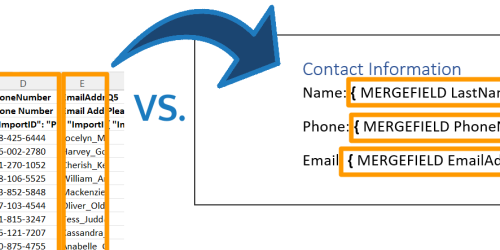What the pour over can teach us about our software choices
TL;DR? It’s easy to feel left behind by new jargon and new technologies. It’s also easy to get distracted by Shiny Object Syndrome. Choosing software for your business shouldn’t be determined by either of those things. When faced with something new, there’s a 5 phase process we typically go through. The first phase is largely emotional. Phases 2 through 5 provide the outline of a SOP you can use to make well-informed and well-reasoned software choices for yourself.
I was recently introduced to someone by a mutual contact who suggested that we meet at the new contact’s office because of the quality of his pour over.
I admit that although I love coffee and drink it daily, the pour over jargon was new to me. Luckily, Google was able to rescue me from my ignorance, and I realized that I not only hadn’t been left behind by coffee aficionados and some awesome coffee brewing technology, but that this is how I make my coffee all of the time.
In this post, I’ll show how my experience with the pour over is analogous to the process of learning about and responding to “new” software options for our businesses.
What is a pour over?
Now, for those who don’t know, the pour over is basically a manual coffee brewing process in which you “pour” your perfectly heated water carefully “over” your perfectly measured grind to create the perfect cup of coffee. Research into this method will quickly reveal a myriad of options of varying prices, styles, and complexities. Some will swear by a certain type of kettle or a certain type of filter, or state that you need to use a thermometer to get the perfect water temperature or a gram scale to perfectly measure your coffee. (Here’s a non-affiliated blog post on some of the options out there: https://prima-coffee.com/blog/a-beginners-guide-to-pour-over-coffee-brewing)
Adapting Needs and Wants: My Own Version of the Pour Over
I use my everyday electric kettle and a plastic single cup coffee cone that I picked up years ago. I switched to the single serve cone, because I felt unsatisfied by the lackluster coffee created by my electric drip coffee maker, and the French press was too much cleanup. Hating the idea of generating so much trash with paper filters, I explored metal filters before settling back on unbleached paper filters because using them got me the tasty cup of coffee that I wanted and the time/energy expenditure that worked for my daily schedule.
Could I make a “better” cup of coffee by changing out my pour over equipment or paying more attention to the water temperature? Perhaps. But that “better” cup would come at the expense of time and effort in terms of attending to the coffee process and cleanup. My “good enough” cup is … good enough for what I’m looking for from a daily cup of coffee, my schedule, and my budget.
Would I be embarrassed if someone came to my office for a cup of coffee, and this is what I had to offer? No. If I had to show this method to someone else, I’d feel comfortable doing so, because I feel like my choices have been well-informed and well-reasoned.
Phases of Discovering and Assessing New Software Options
As I already hinted at by describing my own version of the pour over, assessment for what’s “best” should start with a little research and a good awareness of your needs and wants. That’s all very logical. In honor of human nature, however, I start off the first phase with emotions, and then follow with phases that can serve as an outline of a SOP for determining whether it’s time for a software change/upgrade.
Phase 1: Feeling Left Behind by Changes in Technology
No one wants to be a dinosaur. Ageism aside, so many new things come out every day that no one can possibly keep up with it all.
When we hear about a “new” thing that “everyone” is using, it’s easy to slip into a panic about being left behind by technology, and to feel an urge to catch up as soon as possible.
You ask yourself things like:
- How have I not heard of this before?
- Is everyone else already doing this?
- Is there something “wrong” with the way I do things?
- How soon can I get on board with this new way myself?
- Is it going to cost a lot?
- What’s going to happen to my old stuff?
These are reasonable questions to ask, and can be incorporated into the work you do in subsequent phases.
Phase 2: Conduct a Sufficient Amount of Research
This is where you take a deep breath. And then do a little research to see what the “new” thing is.
This research doesn’t need to be exhaustive. It needs to be sufficient to give you a good handle on terminology and a basic overview of what’s entailed.
As with my coffee conundrum, a simple Google search will probably suffice. If you’ve just seen a presentation or demo, chances are good that you have enough information to proceed to the next phase.
Phase 3: Step Back and Assess What You Really Want and Need
This is something you have to assess in terms of your business processes (a.k.a. your business flow). It’s good to take stock every once in a while. Needs change over time, and it’s good to reassess where you’re at against where you want to be.
I needed a robust means of making a tasty cup of coffee with minimal cleanup. I wanted a means of doing so that entailed minimal trash waste. My needs were determined by a morning ritual that I’ve come to rely on as a start to my day, and the amount of time I could afford to spend on this ritual without sacrificing something else. My needs had not changed over time, so any change in equipment or process would be driven by wants (or fear of missing out).
Once you’ve determined your ideal business flow (including who does what, how information needs to flow between people, any compliance regulations that you might be under, and performance/productivity metrics), it’s time to turn your attention to those things that are supposed to be supporting that business flow, like your software.
Phase 4: Gap Analysis and Tolerable Deviation From the Ideal State
It’s important to assess if your software is already doing the job.
It’s also important to assess if you’re doing a lot of work to convince yourself that your software is doing the job.
What does it even mean for software to “do its job”? Basically, you need to perform something called a gap analysis. Based on that business flow you just nailed down and the requirements you expect your software to help you meet, investigate for places where the software does or does not help you meet those requirements. For instance, you might need an audit trail of preventive maintenance on your equipment to meet certain compliance regulations for that equipment. Does your software record this information in a way that you can use? If so, then the software is doing this job. If not, and you expect or need the software to be doing this, then you’ve identified a gap between your business flow and your software.
Going back to my coffee conundrum, the French press could have given me the flavor I was looking for, but it was also introducing a lot more busywork into my process versus the single serve cone. I had been left behind by jargon, not technology. In this case, even switching to the “new” thing wasn’t going to change my situation, because I was already doing that thing and just not calling it that thing. Lesson learned. I now had the words everyone else was using to talk about this thing, and I could better target my research to search out possible alternatives. For me, this entailed exploring other pour over methods. I didn’t want to add more tools (i.e., cleanup), and I had already tweaked my process by trying other filters. I was left with an outstanding want but not an outstanding need, and even that want was pretty negligible in my grand scheme of things.
To return again to software, if you have to spend a lot of time getting your software to save data the way you want it to or give you those reports you need, or you have to pass data between a lot of different software packages to get what you need, or people spend days or weeks compiling information “by hand,” then you likely have a gap between your ideal work flow and your actual work flow in terms of efficiency. However, just like I live with my paper coffee filters, maybe this is something you can live with. Only you can decide if this is enough of a pain point to warrant change.
Phase 5: Addressing Gaps Between Your Current Situation and Your Goals
If there’s a real, painful gap between your needs/wants and what you have, now it’s time to search out new solutions.
If you’re at the point where you have an actual gap that needs to be addressed, and not just one you perceive based on new jargon, then there are two basic options for you:
- It could be the case that your existing software solutions can be tweaked or extended to close your gaps. This might involve changing your process a bit so that the software is better suited to your needs. (Be careful that you don’t fall into the trap of working hard to convince yourself that your current software is sufficient.)
- It could be the case that you need to start putting aside some of your budget for that new software purchase.
As with my coffee conundrum, it might also warrant a little more research to see what the alternatives really are, and whether you see an actual net gain from switching or just different gaps.
It’s okay to not know or not be sure. Don’t be afraid to ask for help.
You can’t be an expert in everything. Expertise takes time and resources, and at some point we each have to choose to pursue some areas of expertise wholeheartedly, learn a little about others, and completely forego the rest. Reach out to others in your industry to see what they’re using, and talk to folks in IT to see if they have recommendations.
Let’s have a conversation!
If new jargon has ever sent you into a panic, I’d love to hear about in the comments! What was it and how did you deal with it? (If you have a favorite coffee brewing method, feel free to share that, too!)
Want help assessing whether there are gaps between your business processes and your software? Let’s Connect and talk about it.




